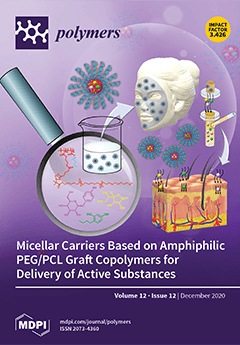Herein, we report PAN-g-Alg@Ag-based nanocatalysts synthesis via in situ oxidative free-radical polymerization of acrylonitrile (AN) using Alg@Ag nanoparticles (Alg@Ag NPs). Various analytical techniques, including FTIR, XRD, SEM, TEM, UV–Vis, and DSC, were employed to determine bonding interactions and chemical characteristics of the nanocatalyst.
[...] Read more.
Herein, we report PAN-g-Alg@Ag-based nanocatalysts synthesis via in situ oxidative free-radical polymerization of acrylonitrile (AN) using Alg@Ag nanoparticles (Alg@Ag NPs). Various analytical techniques, including FTIR, XRD, SEM, TEM, UV–Vis, and DSC, were employed to determine bonding interactions and chemical characteristics of the nanocatalyst. The optimized response surface methodology coupled central composite design (RSM–CCD) reaction conditions were a 35-min irradiation time in a 70-mg L
−1 2,4-dinitrophenol (DNP) solution at pH of 4.68. Here, DNP degradation was 99.46% at a desirability of 1.00. The pseudo-first-order rate constant (
K1) values were 0.047, 0.050, 0.054, 0.056, 0.059, and 0.064 min
−1 with associated half-life (
t1/2) values of 14.74, 13.86, 12.84, 12.38, 11.74, 10.82, and 10.04 min that corresponded to DNP concentrations of 10, 20, 30, 40, 50, 60, and 70 mg L
−1, respectively, in the presence of PAN-g-Alg@Ag (0.03 g). The results indicate that the reaction followed the pseudo-first-order kinetic model with an R
2 value of 0.99. The combined absorption properties of PAN and Alg@Ag NPs on copolymerization on the surface contributed more charge density to surface plasmon resonance (SPR) in a way to degrade more and more molecules of DNP together with preventing the recombination of electron and hole pairs within the photocatalytic process.
Full article






